Knowing how to parry punches will help you in any combat scenario, whether that’s dojo kumite or Vegas Money fight.
If you had to rank the value of different techniques, parrying would be way up on boxing’s defensive hierarchy. Parrying offers more protection, hand control, and counter punching options than blocking or slipping, and being on the “receiving end” sucks – it’s like doing a tiny lat raise against the pressure of the opponent’s hand, only with no warning, while you’re already throwing your force in a different direction. To help you develop your parrying technique, I’ve got 10 tips, film study recommendations, and plenty of visuals.Let’s get started…

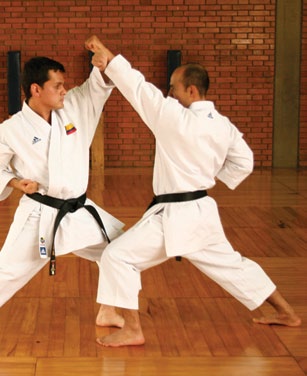
How to Parry Punches in Any Combat Sport
Though we source our GIFs from boxing, the following 10 tips apply to all martial arts:
1. Vary the direction of your parries
You should know how to parry punches in at least four directions:
- Patting the punch DOWN
- Lifting the punch UP (often from low-hand lead position, with glove, forearm, or elbow)
- Knocking the punch IN (often with the forearm or glove from high guard)
- Scooping the punch OUT (usually with the hand, or with the elbows vs. a body shot)
Each parry direction offers unique offensive and defensive advantages, all of which should be developed as you carry on your boxing journey.
2. Be proactive with parries
When beginners first learn how to parry punches, they’re taught the reactive method. As its name suggests, this method involves acting in response to the opponent’s punch – they throw the jab, you parry it off.
Reactive parrying is a fundamental defensive skill, but it’s not the only way to parry. As you search for ways to enhance your defense down the line, consider adding proactive parries to your game.
“Proactive parrying” refers to when a fighter uses the parrying motion before their opponent punches. Parrying before any punches are thrown may sound stupid – you literally “parry” the empty space in front of you – but taking the initiative in this way offers a number of offensive and defensive benefits.
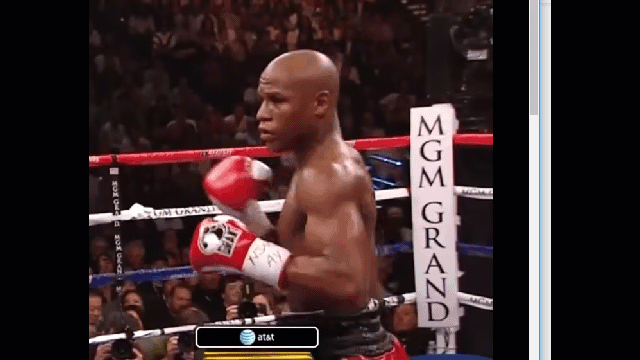
Floyd Mayweather closes down the jab lane using proactive parries versus Shane Mosley.
First of all, proactive parrying disrupts the opponent’s offense between exchanges, and in some cases may even shut it down entirely. By parrying in the space their punch must travel through, you deny the opponent that opening before they’ve even tried to attack. Now attacking that angle means contending with your proactive defense. More often than not, the opponent will choose a route with less “traffic.” In this way, proactive parrying gives you a measure of control over your opponent’s offensive options, thereby decreasing the number of threats you have to be aware of at that moment.
For best results, try to nullify specific punches, while staying alert to the openings your proactive movements are leaving. For example, if I’m fighting somebody whose known for busting opponents up with a shotgun-style jab, I will use proactive parries with my right hand to obstruct the path of that punch. While this right-handed “defensive feint” shows the opponent the jab isn’t available, it does leave the right side of my face exposed, so I will need to be ready to pull back, drop under, or adjust my hand positioning at the first sign of a hook.
Proactive parries also work as excellent hand feints, which blend nicely into a larger “cloak and dagger fighting” strategy. These hand feints make great “covering fire” for exits after an attack, obstructing the path of the opponent’s most likely counter:
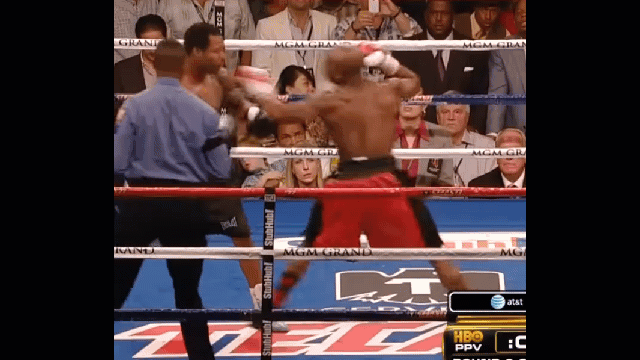
Mayweather’s proactive parry eliminates Mosley’s counter option.
Moreover, if your opponent isn’t addressing your proactive parry, you can use the extended hand as a jump-off point for all kinds of hand traps and head control.
Finally, proactive parries can counter opponents who like to set up offense with feints. Rather than giving every feint your full attention (and thereby giving the opponent a chance to sneak in their power shot), proactive parries automate your defense against that punch while you stay alert of what’s coming next.
WARNING: PROACTIVE PARRIES CAN BE DANGEROUS
Reaching out with a hand that could be guarding your face and body can get you into trouble. Make sure you know what you’re trying to accomplish with a proactive parry, along with what you’re giving up. We recommend the following 3 tips to keep you safe:
- Develop your defensive radar. As mentioned earlier, you’ll need to know what openings your proactive parry creates. If I’m parrying the opponent’s jab lane, I’m open to a left hook, so this becomes a primary threat on my defensive radar. Conversely, if I’m parrying in the opponent’s cross lane, I know I’m open for an overhand. Understand that there are no defensive “free lunches” – adding protection in one area subtracts it somewhere else.
- Bolster your passive defense. When used together, your off-hand and lead shoulder can form a tight guard, giving you an added line of defense. Take advantage of this passive protection to help keep you safe while you paw with proactive parries.
- Maintain good posture. Don’t lean forward with your proactive parries. Giving your opponent your head while floating a hand away from your face is asking for trouble, turning an otherwise solid defensive tactic into a race of reflexes.
3. Learn how to parry punches with the entire arm
Beginners learn how to parry punches with their hands, but that’s just the tip of the iceberg. Smart fighters use every tool at their disposal; elbows, forearms, and shoulders can all be used to parry and knock punches off their paths, giving the boxer more chances to avoid getting hit. Using the entire arm is especially useful in MMA and karate where glove sizes change dramatically.
In fact, using the forearm and elbow to parry is an essential skill if you’re boxing out of a low hand position. When used properly, these parries give you all the defensive and hand-feinting options that people assume you lose with a hands-down boxing style.
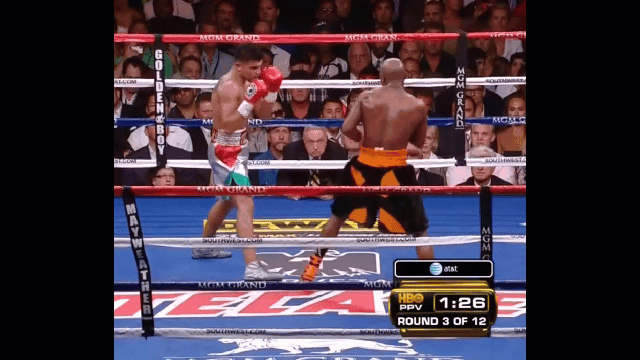
Floyd Mayweather uses an elbow parry to set up a spearing counter cross vs. Victor Ortiz.
If you’re only parrying with the hands, you’re forfeiting valuable lines of defense. Consider that a skilled fighter can parry 3+ ways with one arm – if you get past my hand, I’ll try with my elbow, then again with my shoulder. While hand parries give you the most control over your opponent’s punch, there’s no reason to give up two more tries! Even if you don’t fend the punch off perfectly, you’ll usually muddy up the delivery enough to take the sting off the shot, which is always worthwhile in my mind.
4. Open the glove for better hand parries
Since we’re taught to keep our hands held in relaxed fists, close-gloved parries are a common beginner mistake. While not entirely useless, closed-glove parries are harder to execute, giving us less control of the opponent’s punching hand and making unfortunate ricochets more of a threat.
When learning how to parry punches, focus on opening the glove. This maximizes the surface area of your defending hand, turning that tiny buckler into more of a heater shield, which greatly improves your odds of success. As in our last point, opening the hand also gives boxing parries the greatest amount of carryover for MMA and self-defense applications.
5. Combine “cross” and “mirror” parrying styles
Though the textbook says mirroring parries are best (e.g. the orthodox left jab is parried by the orthodox right glove that mirrors it), cross-parries (e.g. opponent’s orthodox left jab is parried by the orthodox left hand) have unique offensive value.

Floyd Mayweather shuts down McGregor’s offense with mirror parries.
Though you give up some defense, cross-parries allow you to physically move the opponent’s guarding glove out of the way with the off-hand to ensure your counter punch hits home.
Conor McGregor uses a cross-parry to create the opening for his knockout punch on Jose Aldo.
Boxers should always be looking to expand their toolboxes, which means refusing to settle on one way of doing things. As we mentioned in our boxing film study guide, we must think of techniques in terms of pros and cons rather than right and wrong.
In the same way that punch variations help you surprise opponents and find new openings, parry variations keep you from being predictable and easy to set up.
6. Keep your parry motions small
Overreaching with the parrying hand is one of the most common beginner mistakes we see. This mistake not only costs more energy, but leaves you open to being caught with feints and cloak and dagger setups. As with good head movement, quality parries use the smallest movement possible. Generally speaking, you want your parrying hand to travel no more than 3-4″ from the face.
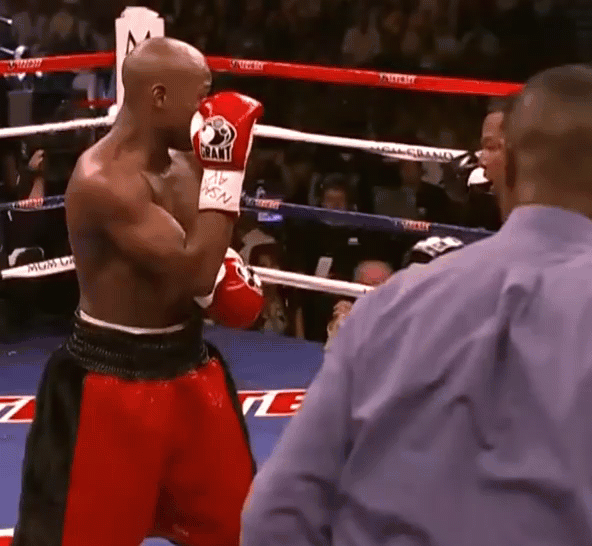
Floyd Mayweather gets caught reaching on a body-jab parry. A smaller motion would have gotten his right hand back in time to defend the cross as intended.
7. Maintain eye contact at all times
This tip probably feels like a ripoff in a “how to parry punches” article since it applies to pretty much everything.
Still, it’s nonnegotiable.
Maintaining eye contact as you parry helps you spot openings for your counter punch, and increases your chances of defending any of the opponent’s follow-up offense.
My coaching cue is “creepy eyes.” No matter what you’re doing in the ring, keep your creepy eyes on the opponent.
Keeping a sharp eye for openings also makes the opponent feel vulnerable while punching. In a sense, your eyes work as a feint. The opponents becomes more conservative with their punch output because they see you staring at holes in their defense.
Andre Berto describes the power of Floyd Mayweather’s creepy eyes.
8. Keep your elbows close to the body
Even if your hands are active with parries, it’s a good idea to minimize openings (and maximize leverage on counter-shots) by keeping your elbows on the body while you work. This also applies to parries that use the elbow to brush away body punches; rather than lifting the elbow to meet the shot, you keep it glued to your torso and turn.
9. Drill fluency with other defensive techniques
Predictable parries do more harm than good. If your opponent knows where your hands will move to defend a punch, they can pry your guard open with feints at will.
Relying too much on parries is also more tiring since it uses the same muscles over and over. Varying your defense lets you work the body more evenly, allowing for better energy management.
I recommend training your parries in combination with active blocks, slips, and footwork evasion. Focus especially on flowing from one defense to another. In the same way that an MMA fighter needs to dedicate training time to the combining of boxing, wrestling, jiu jitsu, and muay thai to best understand how they fit together, boxers cannot train slips, parries, and blocks in isolation. Condition yourself to weave different defensive techniques together and remain unpredictable, and your parrying will instantly improve.
Fluent transitions from parrying to slipping also allows you to tire, off-balance, and punish your opponent in dramatic fashion. Like blocking, parrying is a mode of defense that reassures the opponent with solid contact, and you can use that to create and exploit a false sense of security. If the opponent is used to you blocking and parrying, they’ll be encourage to keep throwing, which makes it very easy to set them up for a big miss – and even bigger counter punch! We cover this concept in greater detail in our blocking guide.
10. Learn how to parry punches from the guard (without reaching)
Parrying doesn’t always involve reaching out from guard. In fact, many of the best parries look a lot like blocks, involving subtle movements of the hand, elbow, or forearm from a high guard.
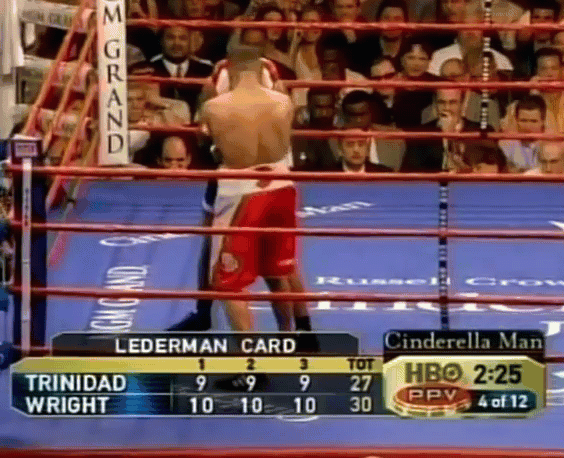
Ronald “Winky” Wright parries Felix Trinidad’s murderous left hook to the body from the high guard.
Reaching with parries does have some value, especially in regards to hand trapping and head control tactics, but it’s not the only way to get the job done. If you’re new to learning how to parry punches, start with conservative motions from a tight guard until the timing starts to make more sense.
Wrapping Up
On behalf of the Warrior Punch team, I hope these 10 parrying tips help keep you safer in the ring.
As always, I recommend using these tips as a framework for your boxing film study. Some of my favourites to watch are:
- Floyd Mayweather
- Emanuel Burton/Augustus
- Vasyl Lomachenko
- George Foreman
- Chris Byrd
- Andre Ward
- Marlon Starling
- Saul “Canelo” Alvarez
- Guillermo Rigondeaux
Let me know some of your favourites on our Facebook page. We also answer any questions you have, and offer free video breakdowns for any training footage or fight film you submit, so come join the Facebook cult and talk shop with us.
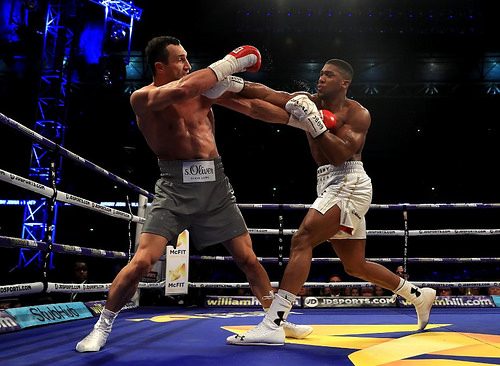
1 thought on “How to Parry Punches: 10 Tips for Better Boxing Defense”
Comments are closed.